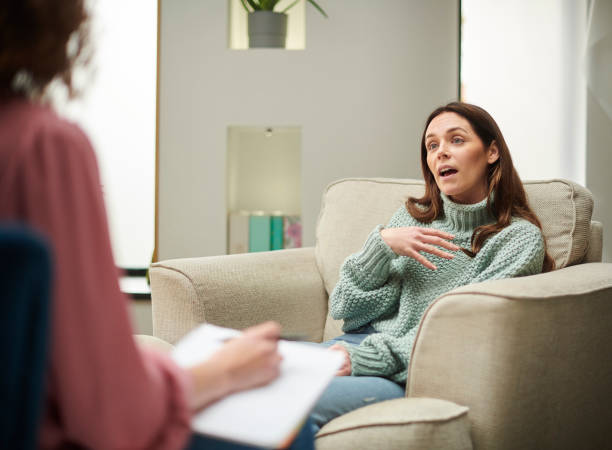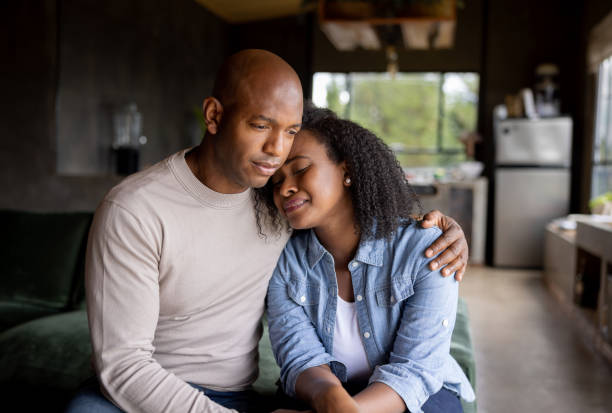
You may have heard of Obsessive-Compulsive Disorder (OCD), and you may have heard of Post-Traumatic Stress Disorder (PTSD). OCD is characterized by intrusive and compulsive thoughts and behaviors. The thoughts are typically the obsession, and the behaviors are the compulsion utilized to cope with the thoughts. PTSD is a mental health condition triggered by a traumatic event, either one you go through or something you witness. It can cause flashbacks, nightmares, anxiety, and depression.
These two disorders can co-exist as Post-Traumatic OCD, wherein an intricate interplay exists between OCD and PTSD. In this situation, the OCD is experienced in response to the traumatic event that triggered the PTSD and the ongoing fallout. The intrusive thoughts and need to partake in certain behaviors may stem from the fear and anxiety caused by PTSD. For example, utilizing certain rituals in order to soothe oneself from fears surrounding the traumatic event. OCD can, therefore, begin to appear as a “solution” to PTSD, wherein you are utilizing behaviors of OCD to cope with the impact of PTSD.
Understanding Post-traumatic OCD
Post-traumatic OCD is a relatively lesser-known phenomenon, but it can significantly impact those who experience it. On one hand, OCD is characterized by intrusive, distressing thoughts (obsessions) that lead to repetitive behaviors or mental acts (compulsions). On the other hand, PTSD develops after a traumatic event, causing symptoms like flashbacks, nightmares, and intense emotional reactions. When these two conditions coexist, they can intensify and complicate each other, leading to unique challenges.
Common Manifestations

- Intrusive Thoughts may occur about unwanted subjects, such as harming yourself or the harm of others. Your thoughts may persist despite your attempts to distract yourself.
- Compulsive Behaviors may be your way of quieting your thoughts, or rituals may be your way of trying to counteract the feelings that your trauma evokes.
- Avoidance happens when you don’t address issues or you keep away from people or places that would require you to address and accept your distress. You may also avoid connections with people out of fear of losing them.
- Hyperarousal is a heightened state of readiness; you may have trouble feeling calm or “letting your guard down” instead of always being on high alert for danger and/or triggers of any kind.
5 Ways to Manage Post-Traumatic OCD
1) Psychotherapy:

Therapy for OCD is about taking action and restructuring thought processes and behaviors. Cognitive-behavioral therapy (CBT) tailored to treat both OCD and PTSD can be immensely helpful. Exposure and Response Prevention (ERP) techniques target obsessive thoughts and compulsive behaviors.
Psychotherapy is not solely about discussing how you feel; you can utilize loved ones or some of that, just as they probably confide their emotions in you. Psychotherapy is administered by a trained professional who can guide you through behavioral modification and adjusting thought patterns. We provide OCD therapy in Woodland Hills and see many patients who benefit greatly from having a safe and supportive environment in which to pursue mental wellness. Your therapist will also be able to assist you as your journey will not be linear, no matter how much you might like it to be. You will need reminding that you are pursuing realistic treatment for your post-traumatic OCD and that that often means you will experience setbacks and frustrations.
Post-traumatic OCD is a response to something that happened to you or in front of you. Therapy is a space where you can come to terms with what happened and work through the ramifications. PTSD and OCD both feature intrusive thoughts, though it is often memories that are intrusive in PTSD, and OCD tends to focus on a worry about the future. Regardless of the timelines of your fixation(s), PTSD and OCD have strong overlapping symptoms.
Exposure Therapy is the process of confronting issues in a safe environment. This may mean visualizing, going to certain places, or trying certain things. When OCD manifests in response to trauma, it shows up as a “helper” trying to keep the trauma from reoccurring. It can be upsetting to imagine giving up the rituals you developed to create a sense of safety. ERP would have you visualize a scenario and imagine going through it. Your therapist would be able to address thoughts and fears that might arise. The next step may be to visit a location that is triggering, whether it is the exact location of an incident or one where you cannot predict what might happen. The goal may be to be there for a minute. Through talk therapy, you can unpack what you imagined, what the reality was, how you felt in your body, what thoughts rose to the surface, how you responded to them, and more.
2) Medication:

In some cases, medication can play a crucial role in reducing symptoms. Antidepressants like SSRIs (selective serotonin reuptake inhibitors) may help alleviate both OCD and PTSD symptoms. These medications work by improving chemical signals in the brain; they increase serotonin (a positive chemical). Medication should be used in tandem with therapy, especially CBT. SSRIs can have side effects like nausea and sleep disruption, such as drowsiness or an inability to fall asleep.
When considering medications and how they work for you, there are a lot of factors. Different medications are taken at different intervals or other times of day. Various medications will work differently with your specific body chemistry. You may find that you’re better at taking medication at bedtime, but that specific medication is not the one that makes you feel best. Factors like this can impact how you feel about taking medication; sometimes, it can be frustrating to be in a trial-and-error cycle. However, after some time, you should be able to find the best fit for you.
Medication for OCD and PTSD should be administered and monitored by a professional. For many people, there is a mental and emotional side to figuring out and sticking with medication. A therapist can assist you in unpacking and accepting your thoughts and emotions about the process. It is important to remember that medications used to treat OCD are not “cures” for OCD. They work by lessening symptoms of OCD, not eliminating them.
3) Mindfulness and Relaxation:

Practices like meditation, deep breathing, and mindfulness can help manage anxiety and provide coping mechanisms for distressing thoughts. These can be utilized to combat your response to being triggered and throughout your routine to maintain an overall increased sense of calm.
Meditation is a practice of clearing your mind, and most people find the idea very challenging. It can feel especially impossible to imagine if you are plagued with intrusive thoughts, as most with PTSD and OCD are. Part of this misconception is due to the idea that a clear mind is a silent mind, and that just isn’t so. Meditation means that you are sitting with your thoughts and learning to observe them from a distance. Most meditation begins with paying attention to your breath. This helps to ground you in the present moment. When you first begin this practice, you may want to set a time limit for your meditation. You might want to find a way to remind yourself to meditate until it becomes more of a habit. There are guided meditations of varying lengths online; you may want to find one that works for you and commit to doing it once daily.
With meditation, we practice mindfulness. Rather than let our instincts take over or our thoughts run away with us, we pay close attention to the present moment and the reality of our situation. We can use our senses to be mindful, such as feeling the steering wheel in our hands, smelling a familiar scent, or choosing something to look at while we connect with breathing.
What these practices help us to do is come back to ourselves. Because a thought arising during meditation is inevitable and the need to anchor yourself with mindfulness is unavoidable, you learn to accept these instances and recalibrate. Sometimes, the stakes are lower. Other times, they’ll be higher.
4) Support Groups:

Connecting with others who understand the challenges of Post-traumatic OCD can provide a sense of validation and reduce isolation. Some of the side effects and symptoms of PTSD, OCD, and post-traumatic OCD can create feelings of shame that can only be undone by an understanding that you are not the only one experiencing these issues. Intrusive taboo thoughts, for example, can be difficult to share with friends and family but understood and accepted by others who experience them.
As an OCD counselor in Woodland Hills, I see the benefits of community in my patients who find a support group that works for them. Psychotherapy, combined with community support, medication, and self-care, can go a long way. While it is important, it is not the only aspect of treatment that matters. As much as I want my patients to build a trusting relationship with me, there is some reassurance that lands more easily coming from people who have been in the same place, with the same struggles, and who can share about it openly.
Depending on your situation, you may be able to find support groups with people who have been through similar experiences to you. Survivors of childhood violence will connect with one another in a specific way, as will veterans, as will car accident survivors, and so on. It isn’t necessarily imperative to find a group with folks whose experiences are similar to yours, but it may be helpful to know that you are not the only person dealing with your specific circumstance. What is most important is that you feel safe and protected in your group. If you connect with someone whose post-traumatic OCD originated completely differently than yours did, there is nothing wrong with that! You may also benefit from resources tailored explicitly to PTSD or OCD on your own. If something resonates with you, it will do a lot more good than trying to find something that matches your exact situation but doesn’t land with you for some reason.
5) Lifestyle Factors:

A balanced lifestyle that includes regular exercise, a satisfying diet, and sufficient sleep can contribute to overall mental well-being. While you cannot help that incident that triggered your PTSD, you can control how you manage your time and take care of yourself. You will also find that showing yourself care is a great way to train your brain that you deserve wellness. Often, we neglect ourselves when we feel insecure and/or unworthy in some way. Over time, our pattern of self-neglect increases our sense of low self-worth, which leads to further self-neglect. The foundations of self-care, the core behaviors that keep us alive and going, cannot be overlooked when seeking mental wellness.
When we look at the benefits of nutrition in managing OCD and PTSD, we are talking about fuelling the brain as effectively as possible. Foods rich in protein are an asset, as the amino acids the protein breaks down into comprise the chemicals your body needs to improve your mood. Complex carbohydrates also help in giving your body energy. Not everyone eats the same way; our bodies are diverse. Your relationship with food, your access to food, your traditions with food, all of these are factors in how you nourish yourself. Focusing on protein and carbohydrates is a good way to ensure you’re doing your best to support your physical well-being.
Not only do we want to look at positive choices, such as saying yes to sleep, hydration, nutrition, moving our bodies, and so on, but we want to make sure we are avoiding choices that can have very negative repercussions. Drinking alcohol, for example, can increase OCD symptoms such as compulsivity. Alcohol is also a depressant, so while it may create positive feelings at the time, it is ultimately hard on the nervous system. If you are already struggling with depression, adding a depressant to the mix can make things very difficult very fast.
Post-traumatic OCD is a convergence of two mental health disorders. While there is overlap between the two as far as symptoms and treatment, it can also be beneficial to break each down and get a handle on your OCD as well as your PTSD. Where you see improvement in one, you may encounter improvement in the other. Be open to trying different types of therapy, different medications, and different support groups. Be patient when your progress stalls or you experience a setback. Remember, the OCD aspect of post-traumatic OCD is a response to pain. Even though you may feel that it isn’t helping you, it has manifested to protect you. When you seek treatment, you are finding a way to cope with your PTSD that benefits you, as opposed to giving you something else to deal with. Your instinct to protect yourself is a good one; you simply have to find a more sustainable way to do so.
OCD Treatment in Woodland Hills
OCD is more than just hand-washing or checking the doors are locked. It can show up in relationships, while driving, or during post-partum. To understand the OCD cycle and how to create changes in your life to better manage it, you need to work with our OCD specialist here in Woodland Hills or virtually for OCD treatment that utilizes ERP, CBT, ACT, and mindfulness techniques.
Contact us today for your complimentary 20-minute phone consultation with our Client Care Coordinator.



